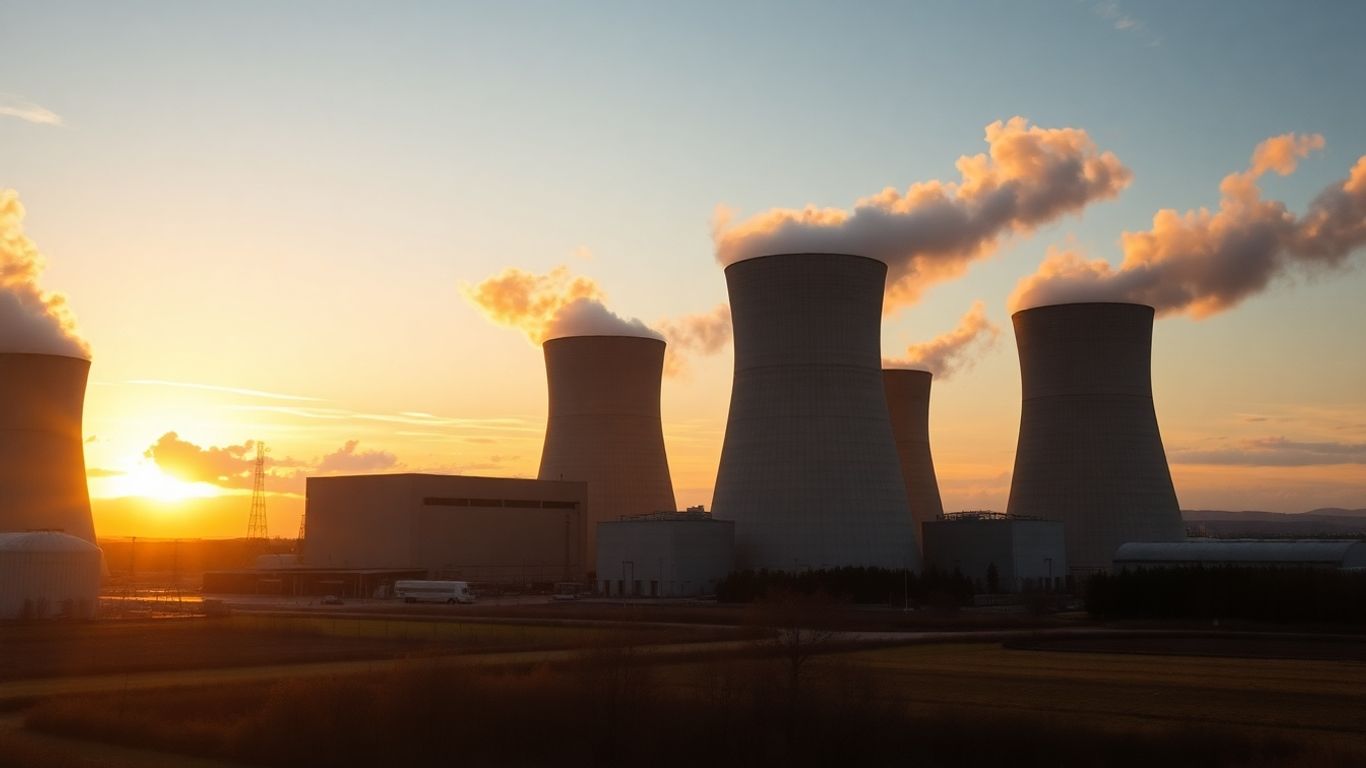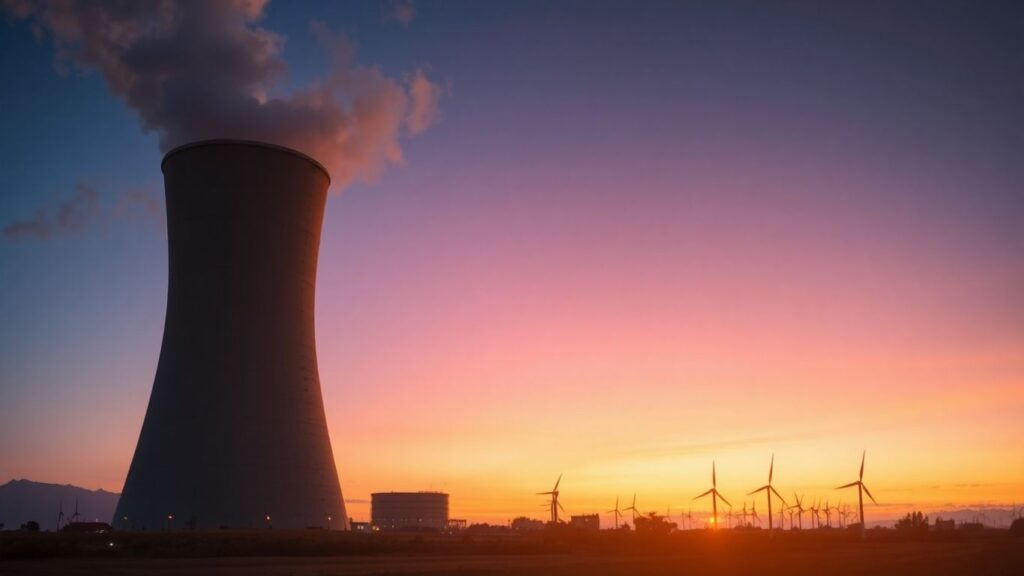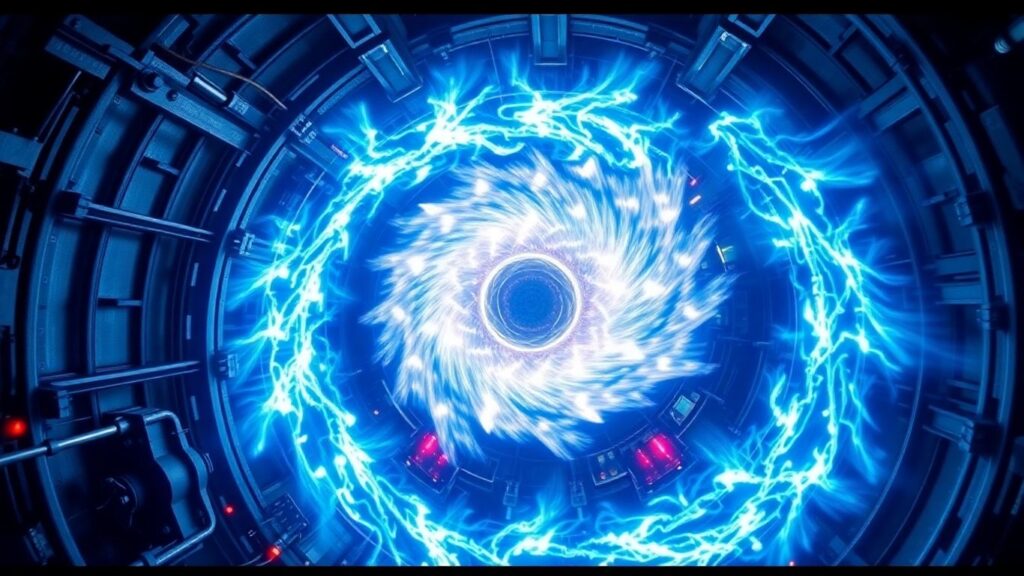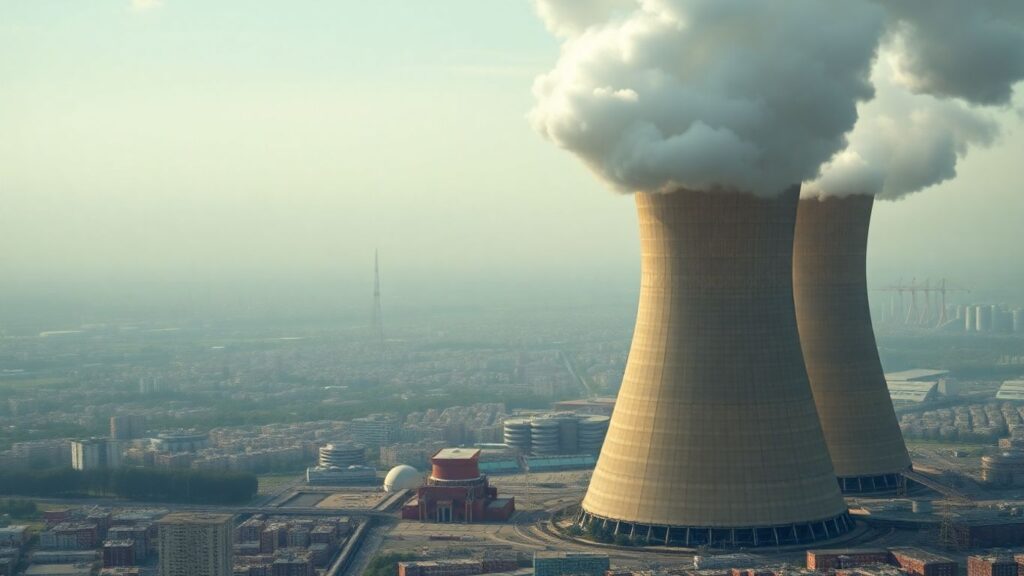Nuclear energy is emerging as a critical solution to escalating global power shortages, with projections indicating a potential $10 trillion market opportunity. Driven by the immense energy demands of artificial intelligence and data centers, alongside electrification efforts and industrial growth, the sector is experiencing a resurgence. Experts believe nuclear power, particularly through advancements in small modular reactors (SMRs), could be the key to meeting future energy needs reliably and cleanly.
Key Takeaways
- Nuclear energy could represent a $10 trillion market.
- Global nuclear capacity may need to triple by 2050.
- Small Modular Reactors (SMRs) are seen as a key innovation.
- Demand is driven by AI, data centers, and electrification.
- US uranium supply chain faces challenges in meeting demand.
The Nuclear Renaissance
Recent analyses suggest that nuclear power is experiencing a significant revival, driven by a confluence of factors including surging electricity demand, a push for cleaner energy sources, and the need for consistent, round-the-clock power. This renewed interest, coupled with supportive government policies and a more positive public perception, is fueling investment across the nuclear energy supply chain. Companies involved in various stages, from uranium mining to reactor development, are seeing substantial growth in their share prices.
Small Modular Reactors: The Future of Nuclear Energy?
Small Modular Reactors (SMRs) are at the forefront of this nuclear renaissance. These reactors, designed to produce around 500 megawatts or less, offer advantages over traditional nuclear power plants, including lower costs and faster construction times due to their modular design and potential for mass production. Companies like NuScale Power and Oklo are making strides in bringing SMRs to market, with some aiming for operational status by the end of the decade. The demand for these reactors is particularly high in the United States, driven by the energy-intensive needs of data centers supporting the AI boom.
Addressing the Uranium Supply Challenge
While the outlook for nuclear energy is bright, challenges remain, particularly concerning the uranium supply chain. The United States aims to increase its nuclear capacity significantly, but domestic uranium production and enrichment capabilities are currently limited. Historically, Russia has dominated uranium enrichment, but recent geopolitical shifts and import bans are prompting efforts to rebuild the U.S. domestic enrichment sector. Companies like Centrus Energy, licensed for high-assay, low-enriched uranium (HALEU) production, are seen as critical players in this effort. Uranium miners in the U.S., such as Uranium Energy Corp. and Energy Fuels, have also seen significant stock performance, reflecting the growing demand for the essential fuel.
Government Support and Industry Demand
Policies aimed at bolstering the nuclear energy sector, including executive orders signed by President Trump, underscore the growing recognition of nuclear power’s importance. This governmental support, combined with substantial demand from major technology companies like Meta for clean and reliable energy to power their data centers, is creating a powerful tailwind for the industry. The convergence of technological innovation, market demand, and policy support positions nuclear energy as a pivotal component in addressing the world’s escalating energy needs.












